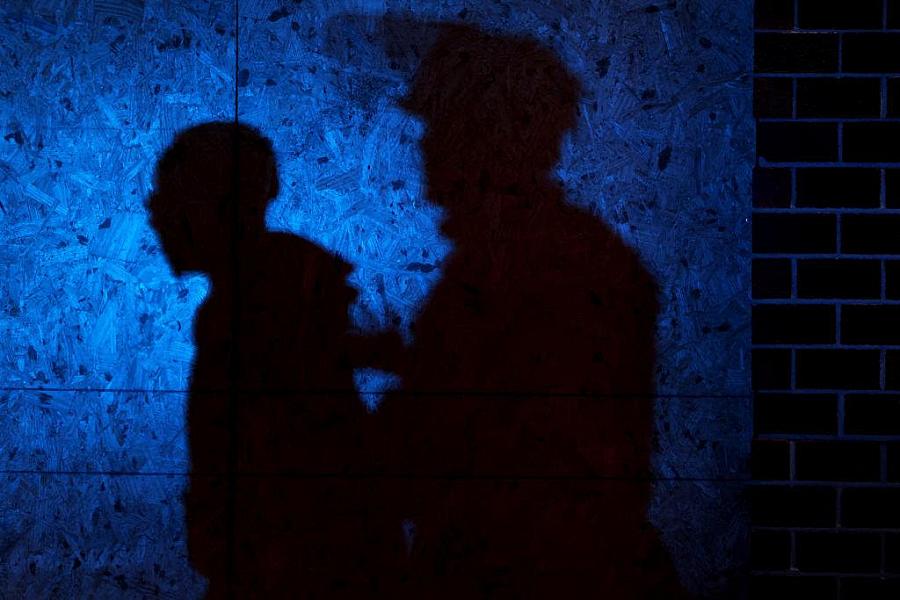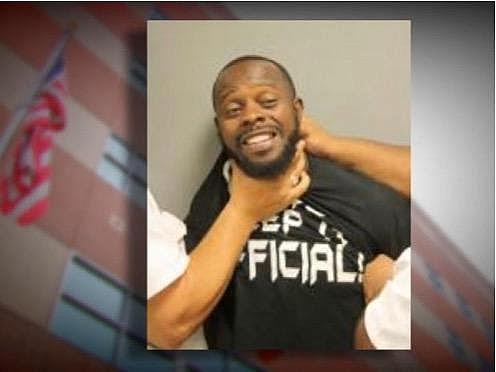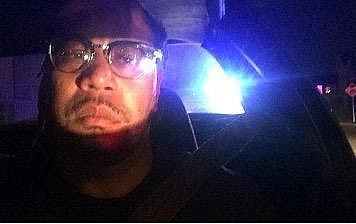The Health Divide: Want to build trust at your outlet? Address the harmful way Blacks are being portrayed

Stop me if you heard this before.
The news is too negative.
Why do you always show African Americans as criminals?
Why don’t you do positive stories on Blacks?
Do you always have to interview a Black person at a crime scene with broken English?
If police shoot a Black man, why must you bring up the person’s criminal history?
In my 30-plus years as a journalist, I have fielded these questions nonstop. I have been a part of many newsroom discussions to address these concerns. As the former president of the Wisconsin Black Media Association, I’ve also addressed these issues with media executives, editors, and reporters at other media outlets to change the narrative and put committees in place to spark change.
Are these concerns real? Of course. It’s one of the reasons why many African Americans don’t trust the media.
The media will never build trust in the Black community if we fail to address their concerns in coverage and representation.
Most Blacks see problems with how they are covered in the news, and they don’t see anything improving in the future, according to a new Pew Research Center survey, “Black Americans’ Experience With News.”
If Blacks are consistently and disproportionately shown as criminals or with mug shots, will this not impact their mental health?
“Do I think these negative images can affect one's health and mental health? Yes,” said Bruce Shapiro, executive director of the Dart Center for Journalism and Trauma, a training institute and resource center for news professionals covering violence at the Columbia Journalism School. “Another question is how these negative stereotypes of Blacks impact others.”
“We know that the overrepresentation of Black people as criminals perpetuates racial stereotypes and can shape everything from their health to personal bias and criminal justice outcomes because some people believe everything they see,” Shapiro said.
Nearly 40% of Blacks say the news is racist
The Pew Research Center survey released Sept. 26 highlights what many of us already suspected. Most Black people say news about Blacks in the media is more damaging than news about other racial groups.
The study also highlighted other key findings:
- 44% of Black Democrats and 46% of Black Republicans believe news coverage stereotypes African Americans.
- Many Black Americans say Black journalists better understand them and cover race-related issues. However, few see a reporter’s race as a critical factor in determining the accuracy of news in general.
- Nearly 40% of those surveyed say the news is racist or racially insensitive about Blacks fairly or extremely often.
- Only 14% of the 5,000 Blacks surveyed are “highly confident Blacks will be covered fairly in their lifetimes,” while “38% think that is not too likely or not at all likely to happen.”
We have a lot of work to do.
As a Black man who lives in the inner city of Milwaukee, these issues are important to me because I’m directly impacted.

A photo of Christopher Johnson taken by the Harris County Sherriff’s Office in Texas. Johnson was arrested in July 2015 on suspicion of drunk driving. The photo, which shows officers choking him after he smiled while taking the photo, went viral.
On Friday, Sept. 29, my wife and I watched our local 10 p.m. FOX6 newscast. The first 19 minutes of the broadcast showed crimes committed by Black people. A police chase that reached speeds of 100 mph, a shooting at a downtown bar, a shooting by a Black person in another county an hour away. “Wisconsin’s Most Wanted” segment was a Black man, and then another police chase after a mall theft with police video. When the positive news finally arrived, it was the “Hot Shot” segment on a young white girl who twirled batons in her high school band.
The news shapes how we’re perceived
I believe these negative images in the media are partly responsible for me being harassed and stopped by the police more than a dozen times for “Driving While Black” and not being issued a ticket.
I was stopped because my rear license plate was covered by snow during a snowstorm. The officer told me that criminals use this tactic so police can’t run their plates.
Another officer also stopped me because he thought the pressure in my front tire was too low. After having me sit for 10 long minutes, he sent me on my way with a friendly warning.

The author, James Causey, in a photo taken during a 2016 police stop in Milwaukee near his job at the Journal Sentinel, after leaving work. The police told him his window tint was too dark before letting him go.
Whenever I get stopped, dozens of thoughts go through my head: What am I being stopped for? Don't make any sudden movements. I hope my auto insurance card is in my armrest, not my glove compartment. Stay calm. And so on.
Your heart races, and even though you know you did not do anything wrong when the officer walks up to your car and shines a light on you, there is a fear that the worst could happen. Is this cop in a good mood? Are they racist?
I can’t explain the health impact you experience because you probably would never understand if you are not a Black person, but it’s the fear of knowing that your life is in this cop’s hands.
Rashad Robinson, executive director of ColorOfChange.org, a group that helps people respond to injustice in their community, said what people hear and see in the media has a tremendous impact on their lives. It can impact the decisions made in schools and courts, institutions where Blacks lack power.
For example, Robinson said if you believed local news in New York, you would think that Blacks committed 72% of the assaults.
However, the actual number is 49%, according to NYPD arrest records.
“This type of overrepresentation sends a message that it's justified to fear Black folks,” Robinson said. “It sends the message that Black people are harmful and hurtful.”
But there’s this other health component we need to talk about. We know soldiers who are exposed to violence in the military can have PTSD. We also know that people exposed to higher levels of trauma are more prone to long-term health impacts. We also know that racism and discrimination are forms of chronic stress, so it isn’t much of a leap to consider the harmful health effects of so much negative news on Black people.
Being exposed to consistent stress impacts the body's systems in negative ways, and raises the risk of chronic disease. Increased blood pressure and higher risk of heart attacks and strokes affect Black people disproportionately.
News directors and reporters have many stories to choose from, but the decisions made in these meetings and boardrooms impact people’s psyche every day, Robinson said. The stories we choose to cover and how they’re framed have real impacts.
Has anything changed since the Kerner Commission report?
Throughout history, African Americans have been misrepresented and stereotyped by the media. In 1967, The Kerner Commission issued a statement that detailed the history of Blacks in America and made recommendations for improving social conditions after widespread riots that summer.
The report called the media coverage of Blacks unfair.
It criticized newspapers and television for failing to report African American life adequately and cited the lack of diversity at most media outlets.
Things have improved since 1967, but that doesn’t mean your media organization should not be working on breaking down stereotypes and biases daily.
At Journal Sentinel, there are things I’m proud of and other things I know we still need to improve on. Here are a few things we have done:
- Let our readers know we are committed to diversity. Last year, our website ran a story: “To serve our Milwaukee community better, we must continue hiring diverse, talented journalists.” “We've pledged that our newsroom will reflect the community we serve by 2025. This means hiring more Black, Latino, and Asian journalists. We need more women journalists in our newsroom and its leadership, too,” the story says.
- Avoid single-source stories from police and prosecutors. We must seek out witnesses and community voices to tell a whole story.
- Crime briefs: We write a whole story or don’t write about an incident. (This is to avoid the vague description of a Black man in black shorts with long black hair.)
- Ongoing coverage: Only write about a case if we intend to follow it through the court system and tell readers how it resolves.
- Accountability: Accountability can be talking to officials about their actions to keep residents safe. If they can’t be reached or don’t say anything, we report that.
- Resources: Provide resources to our readers. For example, we tell people how to get a free gun lock if an accidental shooting happens.
- Host lunch-and-learns: We invite people from the public to come in once a month to discuss issues we should know about. For example, we had members of the LGBTQI+ community come in and talk to us about housing and issues they face with violence.
- Limiting the use of mugshots: We try to avoid the use of mugshots when we can. Especially if the person is a victim of a crime.
- On images: If the photo or video is controversial, we have a committee to discuss the material and see if it should be used and how it should be used.
The damage caused by media regarding images and stories of Blacks cannot be changed overnight, but we know African Americans feel frustrated with how they are being portrayed.
It’s up to us to challenge our media organization to make the necessary changes to be fair. These steps can help build trust and keep people healthy and informed.

